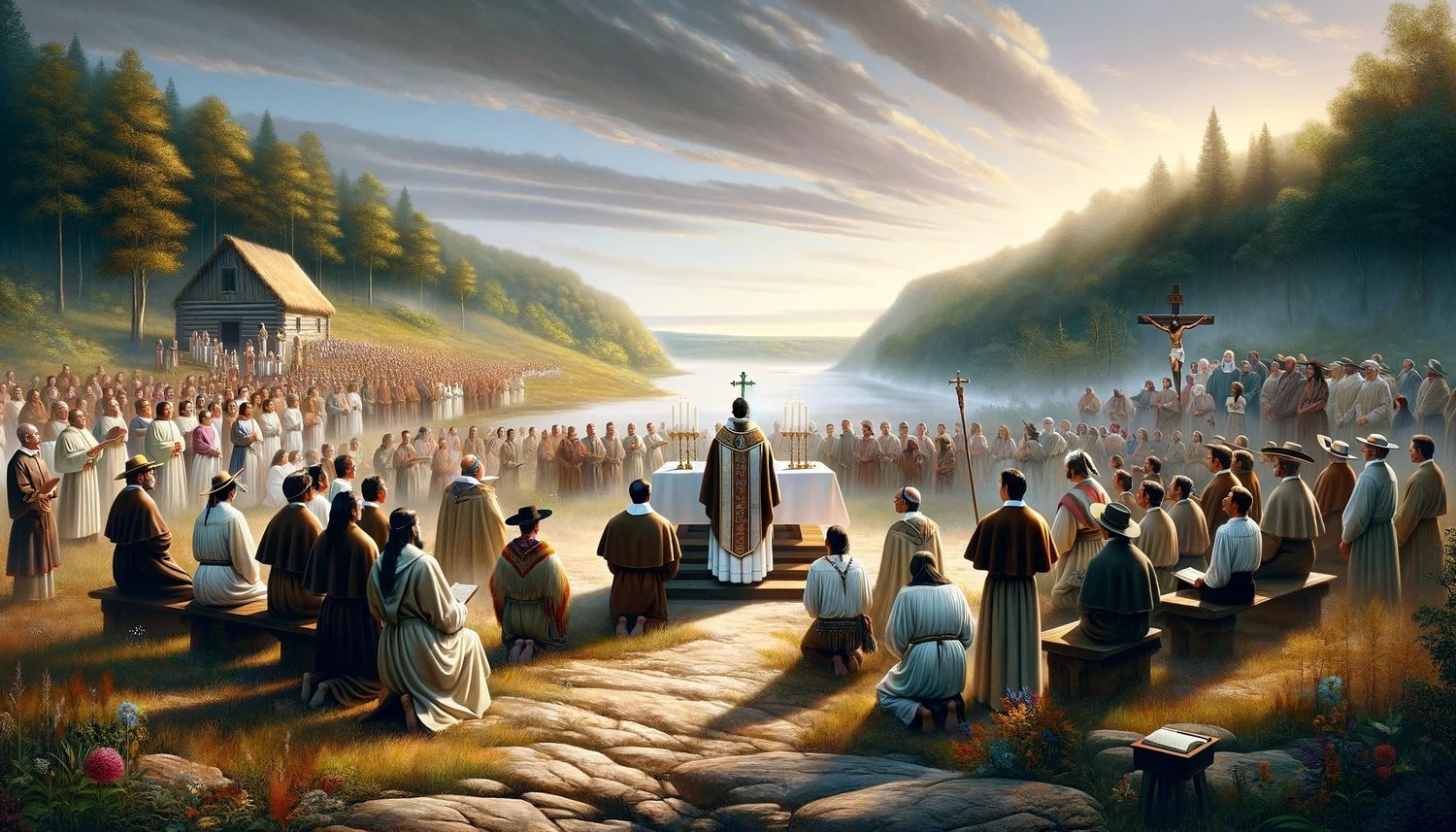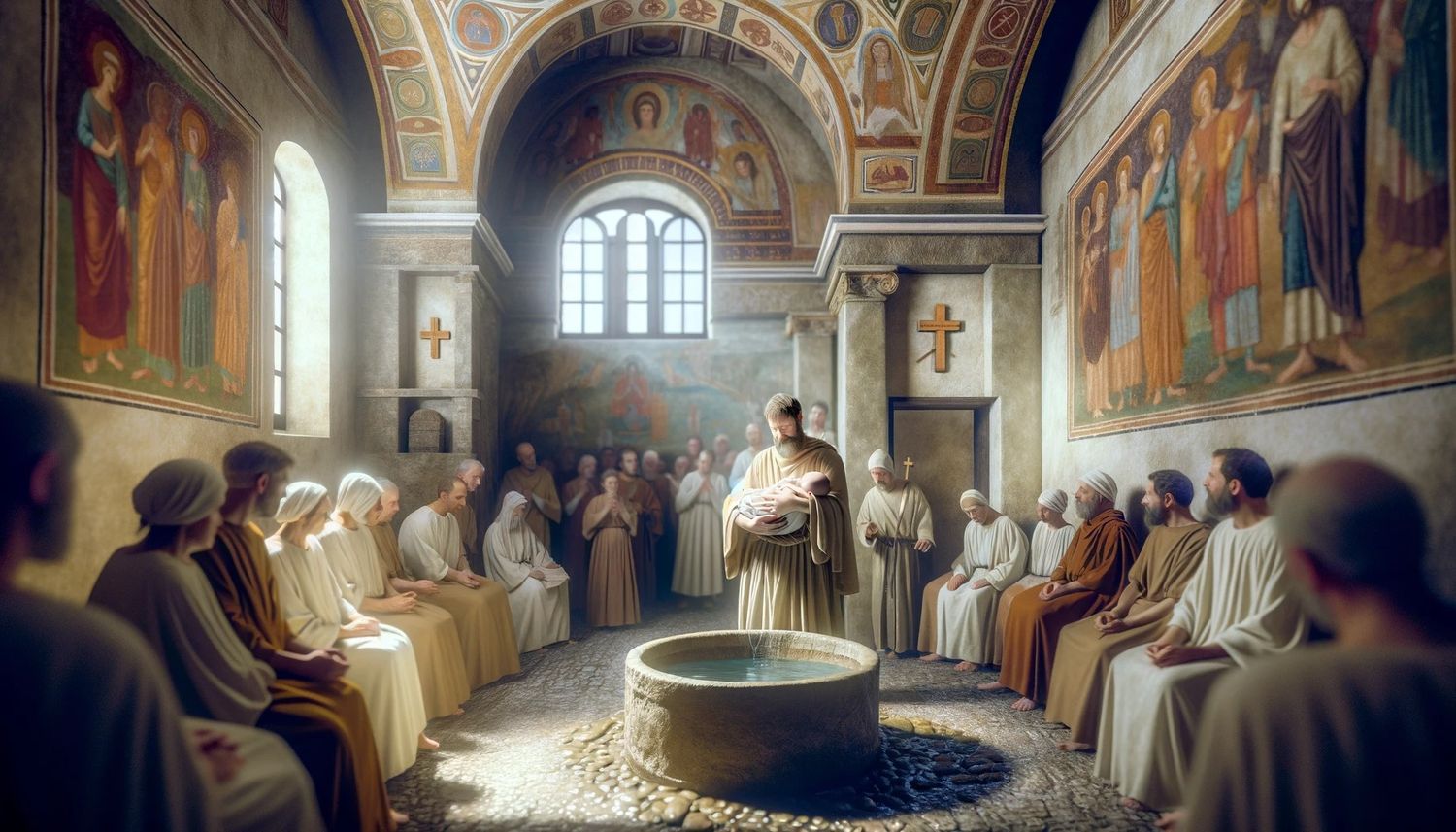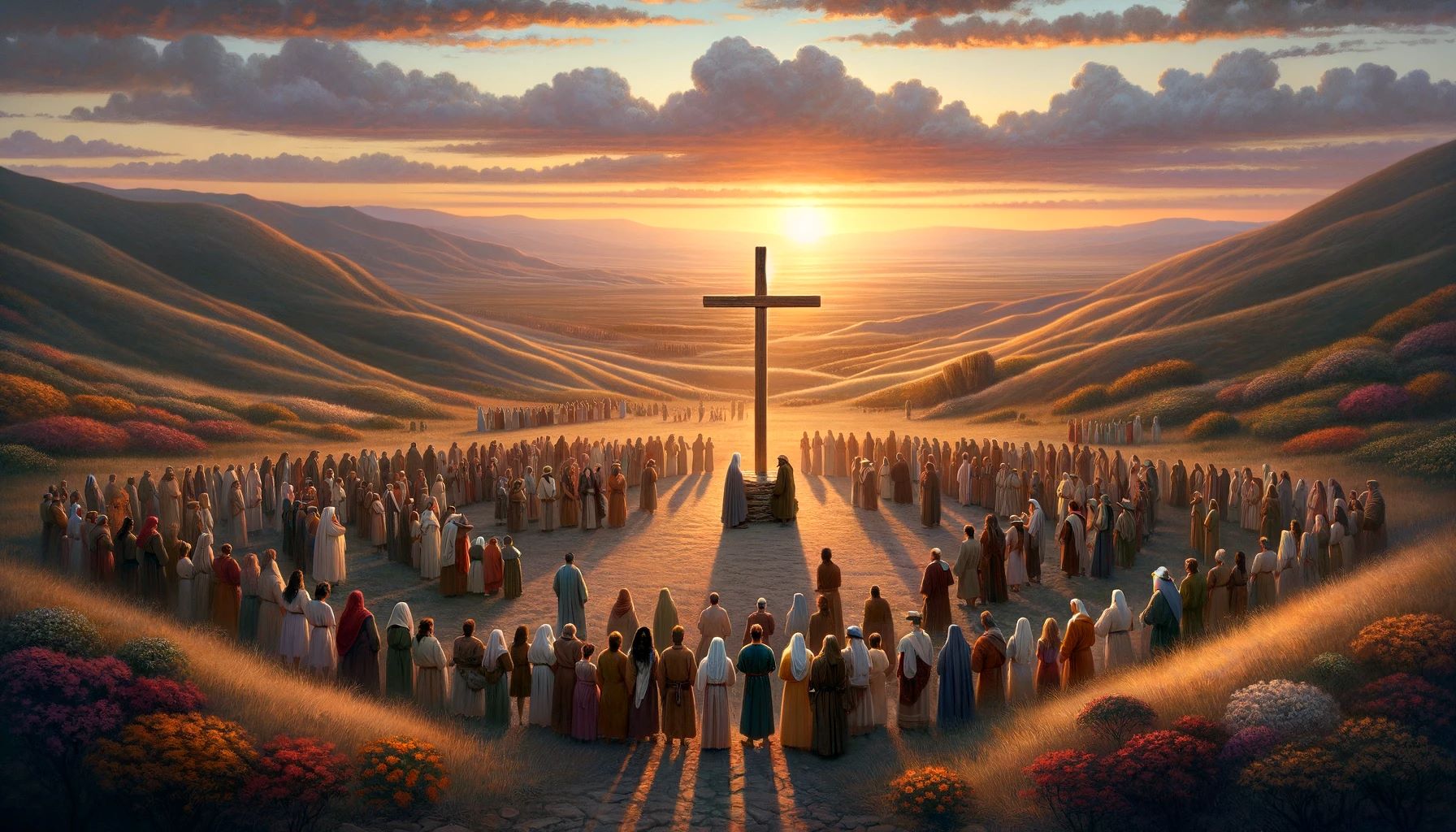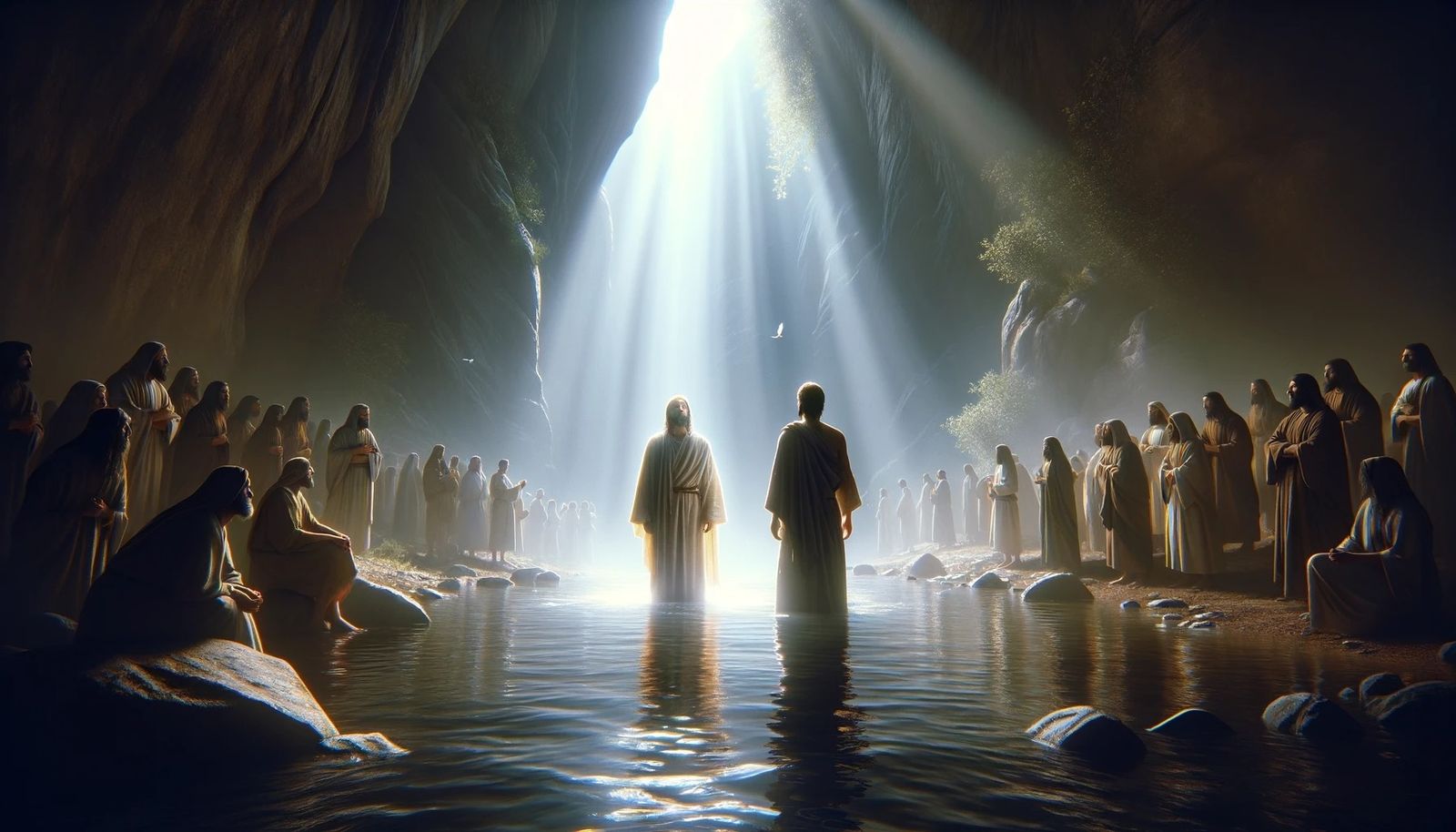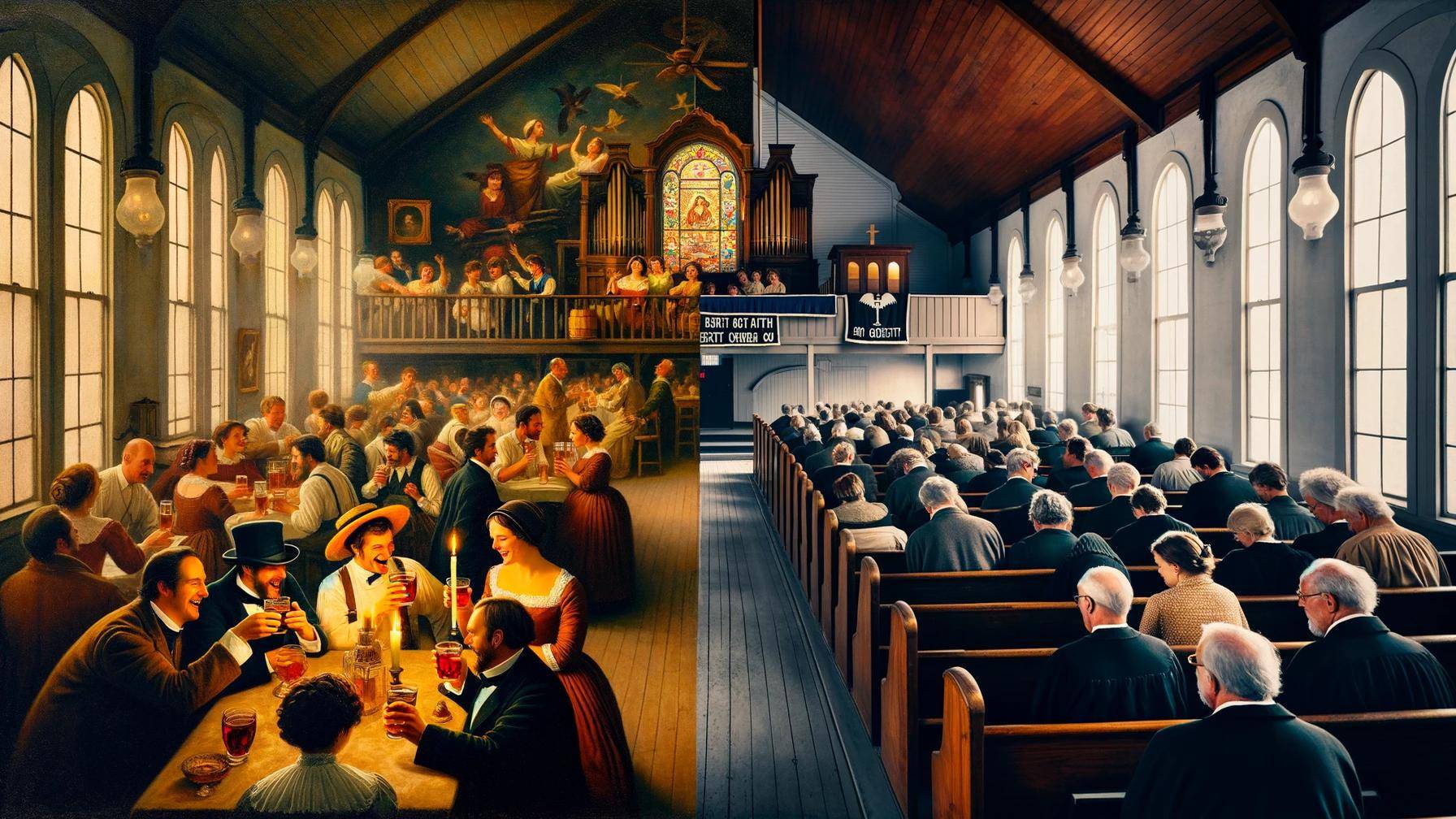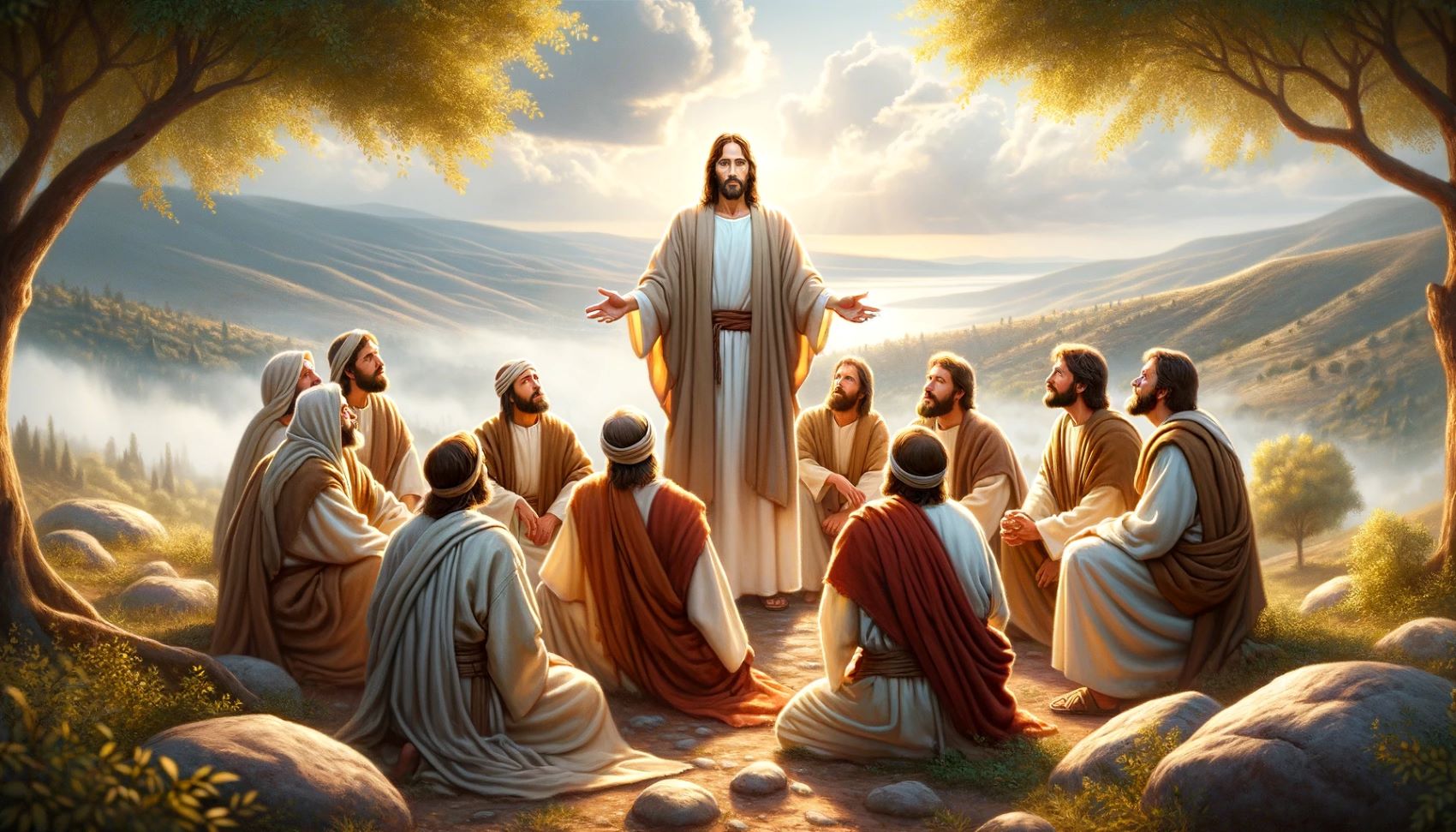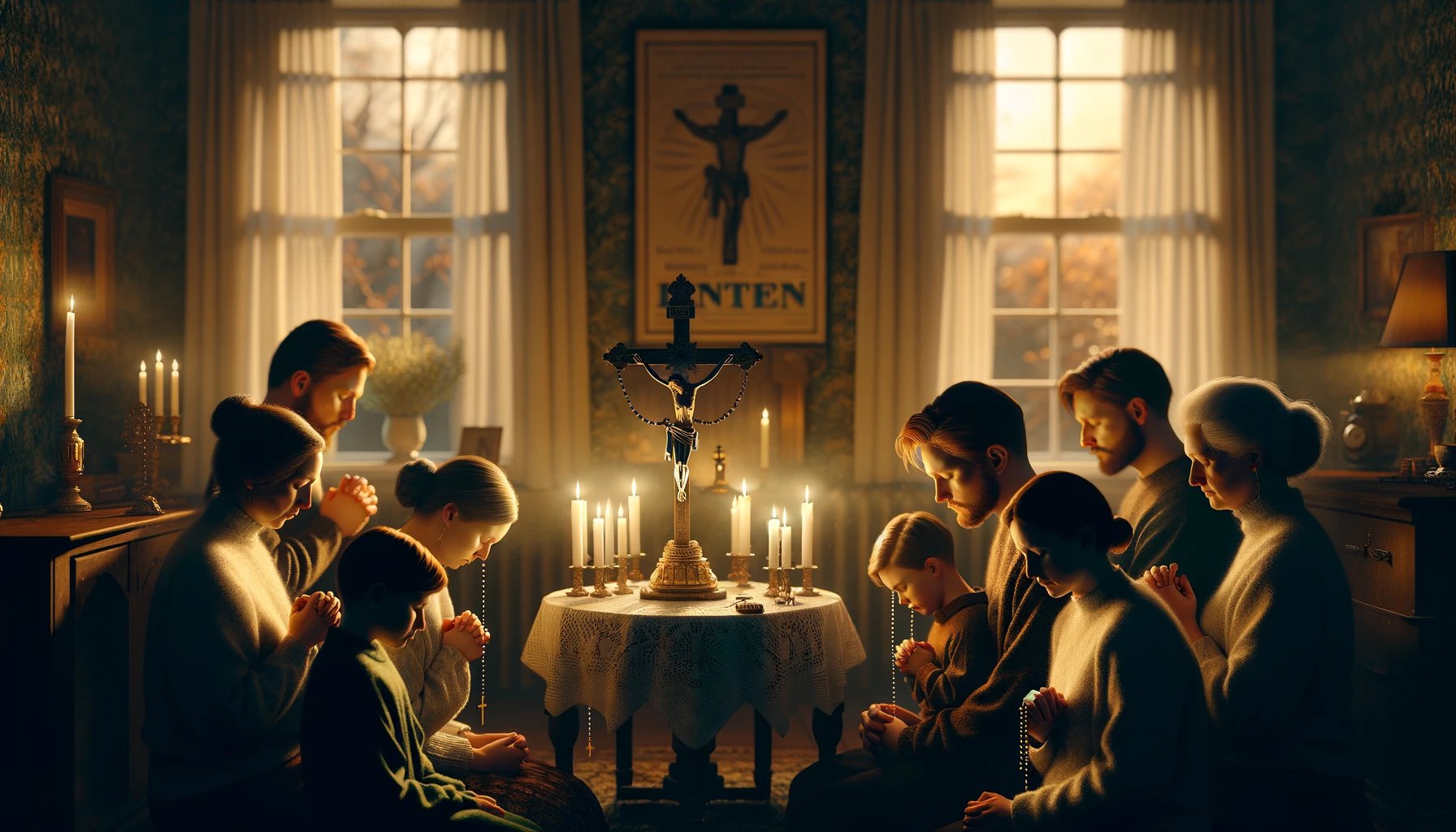Home>Special Themes>When And How Did Lent Begin


Special Themes
When And How Did Lent Begin
Published: February 29, 2024
Peter Smith, Editorial Director at Christian.net, combines deep insights into faith, politics, and culture to lead content creation that resonates widely. Awarded for his contributions to religious discourse, he previously headed a major organization for religious communicators, enhancing dialogue on faith's societal impacts.
Discover the origins of Lent and its significance in Christian traditions. Learn about the history and practices of this special theme.
(Many of the links in this article redirect to a specific reviewed product. Your purchase of these products through affiliate links helps to generate commission for Christian.net, at no extra cost. Learn more)
Table of Contents
The Origins of Lent
Lent, a period of fasting, prayer, and reflection, has been observed by Christians for centuries. But when and how did this tradition begin? The origins of Lent can be traced back to the early Christian church and its evolving practices of fasting and preparation for Easter.
-
Early Christian Fasting: The roots of Lent can be found in the early Christian tradition of fasting before Easter. The practice of fasting was seen as a way to spiritually prepare for the celebration of the resurrection of Jesus Christ.
-
Biblical Influence: The 40-day period of Lent is often associated with the 40 days that Jesus spent fasting in the wilderness, as described in the Gospels of Matthew, Mark, and Luke. This period of fasting and temptation became a model for the Lenten season.
-
Council of Nicaea: The Council of Nicaea, convened in 325 AD, played a significant role in the formalization of Lent. The council discussed the proper observance of Easter and established guidelines for fasting and preparation leading up to the holy day.
-
Early Name: The word "Lent" itself has roots in Old English and originally referred to the lengthening of days in the spring. This linguistic connection reflects the seasonal and spiritual significance of the Lenten period.
-
Penitential Season: Over time, Lent evolved into a penitential season, during which Christians engaged in acts of repentance, self-denial, and almsgiving. This emphasis on spiritual discipline and self-examination became central to the observance of Lent.
The origins of Lent are deeply intertwined with the early practices and beliefs of the Christian church, reflecting a desire for spiritual preparation and renewal in anticipation of the Easter celebration.
Read more: When Did Lent Begin
Early Observance of Lent in the Christian Church
The early observance of Lent in the Christian church can be traced back to the 2nd century, where evidence suggests that there was a period of fasting and preparation for Easter. This early observance was characterized by a shorter period of fasting, typically lasting one to two days, in contrast to the 40-day period commonly associated with Lent today. The focus of this early observance was on self-examination, repentance, and spiritual discipline, as Christians sought to prepare their hearts and minds for the celebration of the resurrection of Jesus Christ.
During this time, the early church fathers, such as Irenaeus and Tertullian, wrote about the practice of fasting before Easter, emphasizing the importance of self-denial and spiritual preparation. The observance of Lent varied among different Christian communities, with some regions observing a 40-hour fast, while others engaged in a more extended period of fasting leading up to Easter Sunday.
The early observance of Lent also included practices such as prayer, almsgiving, and acts of charity, as Christians sought to embody the spirit of selflessness and compassion exemplified by Jesus Christ. The Lenten season was seen as a time for believers to recommit themselves to their faith and to deepen their relationship with God through acts of devotion and self-sacrifice.
As the Christian church continued to develop and expand, the observance of Lent became more standardized, with the 40-day period of fasting and preparation becoming more widely practiced. The early observance of Lent laid the foundation for the rich tradition of spiritual reflection and renewal that continues to be a central part of the Christian faith today.
Development of Lenten Practices
-
Expansion of Fasting Period: Over time, the fasting period of Lent expanded from a few days to the now-familiar 40-day duration. This extension was influenced by the biblical significance of the number 40, which is associated with periods of testing, preparation, and transformation in the Bible. The 40 days of Lent mirror the 40 days Jesus spent fasting in the wilderness, as well as the 40 days of rain during the Great Flood and the 40 years the Israelites spent wandering in the desert.
-
Incorporation of Ashes: The practice of using ashes as a symbol of repentance and mortality became linked to the observance of Lent. The imposition of ashes on Ash Wednesday, which marks the beginning of Lent, serves as a visible sign of penitence and a reminder of human frailty. This tradition has deep roots in the early Christian church and continues to be a significant aspect of Lenten observance.
-
Emphasis on Prayer and Almsgiving: Alongside fasting, Lent became a time for heightened prayer and acts of charity. The Lenten season encourages believers to engage in fervent prayer, seeking spiritual renewal and guidance. Additionally, almsgiving, the act of giving to those in need, is emphasized as a way to embody the spirit of compassion and generosity exemplified by Jesus Christ.
-
Abstinence and Self-Denial: The development of Lenten practices also included the emphasis on abstinence and self-denial. Traditionally, Christians abstain from certain foods, such as meat, and engage in acts of self-denial as a means of focusing on spiritual growth and discipline. This intentional sacrifice serves as a reminder of the suffering and sacrifice of Jesus Christ.
-
Liturgical Observances: The development of Lenten practices also saw the incorporation of specific liturgical observances into the season. Special readings, prayers, and rituals are conducted during Lent, reflecting the themes of repentance, redemption, and the journey towards Easter. The liturgical calendar of the Christian church is marked by distinct observances during Lent, including Holy Week, which commemorates the events leading up to the crucifixion and resurrection of Jesus Christ.
The development of Lenten practices reflects the evolving spiritual and liturgical traditions of the Christian faith, emphasizing the themes of repentance, self-discipline, and preparation for the celebration of Easter.
The Spread of Lenten Observance
-
Geographical Expansion: The observance of Lent spread geographically as Christianity itself expanded across different regions. As missionaries and evangelists carried the message of the Christian faith to new territories, they also introduced the traditions and practices associated with Lent. This led to the adoption of Lenten observance by diverse cultures and communities, each incorporating their own unique customs and expressions of the Lenten season.
-
Cultural Adaptation: The spread of Lenten observance was accompanied by cultural adaptation, as the traditions and practices of Lent were integrated with local customs and beliefs. This cultural adaptation allowed for the rich diversity of Lenten observance, with variations in fasting practices, religious rituals, and seasonal observances. The flexibility of Lenten traditions contributed to its widespread acceptance and incorporation into different cultural contexts.
-
Influence of Church Authority: The influence of church authority, particularly the Roman Catholic Church, played a significant role in the spread of Lenten observance. The church's promotion of Lent as a period of spiritual preparation and renewal, coupled with its influence in religious matters, contributed to the widespread adoption of Lenten practices among Christian communities. The endorsement of Lent by church leaders and clergy further solidified its observance as a central aspect of the Christian liturgical calendar.
-
Integration of Folk Traditions: As Lenten observance spread, it became intertwined with various folk traditions and customs, further enriching the tapestry of Lenten practices. In many cultures, Lent is marked by unique cultural expressions, such as processions, music, and culinary traditions. These folk traditions, while distinct from the religious aspects of Lent, contributed to the vibrant and diverse observance of the Lenten season.
-
Globalization and Modernization: In the modern era, the spread of Lenten observance has been facilitated by globalization and modern communication. The interconnectedness of the world has allowed for the exchange of Lenten traditions and practices across continents, leading to a greater awareness and participation in Lenten observance on a global scale. The modernization of religious observance has also influenced the ways in which Lent is practiced, with technological advancements providing new avenues for spiritual reflection and engagement during the Lenten season.
The spread of Lenten observance reflects the dynamic and adaptive nature of religious traditions, as well as the enduring significance of Lent as a period of spiritual devotion and preparation within the Christian faith.
Modern Observance of Lent
-
Diverse Interpretations: In modern times, the observance of Lent encompasses a wide range of interpretations and practices within the Christian community. While traditional fasting, prayer, and almsgiving remain central to Lenten observance, there is a diversity of approaches to how these practices are carried out. Some individuals may choose to give up specific indulgences or habits as a form of self-discipline, while others may focus on incorporating acts of kindness and service into their daily lives. The modern observance of Lent reflects the individualized and personal nature of spiritual devotion, allowing for a variety of expressions within the overarching framework of Lenten practices.
-
Incorporation of Technology: The modern observance of Lent has been influenced by the integration of technology into religious practice. Many churches and religious organizations utilize digital platforms to provide resources for Lenten reflection, such as online devotionals, virtual prayer groups, and live-streamed religious services. The use of technology has expanded the accessibility of Lenten observance, allowing individuals to engage in spiritual practices and connect with faith communities regardless of physical location. Additionally, social media has become a platform for sharing Lenten experiences, fostering a sense of communal participation and support during the Lenten season.
-
Renewed Emphasis on Spiritual Reflection: In contemporary society, the observance of Lent has seen a renewed emphasis on the spiritual significance of the season. Many individuals view Lent as an opportunity for introspection, mindfulness, and spiritual growth. The Lenten period serves as a time for believers to reevaluate their priorities, deepen their relationship with God, and seek inner renewal. This modern focus on spiritual reflection aligns with the foundational principles of Lent as a time of preparation and self-examination, adapting to the needs and challenges of the present day.
-
Engagement with Social Justice: A notable aspect of modern Lenten observance is the increased emphasis on social justice and advocacy. Many Christians view Lent as a time to address societal issues, promote charitable initiatives, and advocate for the marginalized and vulnerable. This contemporary approach to Lent aligns with the call for compassion and justice within the Christian faith, encouraging believers to actively engage in efforts to alleviate suffering and promote equality during the Lenten season.
-
Cultural Relevance and Inclusivity: The modern observance of Lent embraces cultural relevance and inclusivity, recognizing the diverse backgrounds and experiences of individuals within the Christian community. As a result, Lenten observance may incorporate elements of cultural traditions, music, art, and culinary practices that resonate with different cultural and ethnic groups. This inclusive approach to Lenten observance reflects a recognition of the richness of diversity within the global Christian community, fostering a sense of unity and shared spiritual purpose during the Lenten season.
The modern observance of Lent continues to evolve, adapting to the contemporary context while maintaining the foundational principles of spiritual preparation, self-discipline, and devotion. This dynamic adaptation ensures that Lent remains a meaningful and relevant tradition within the Christian faith, resonating with believers across different generations and cultural backgrounds.
